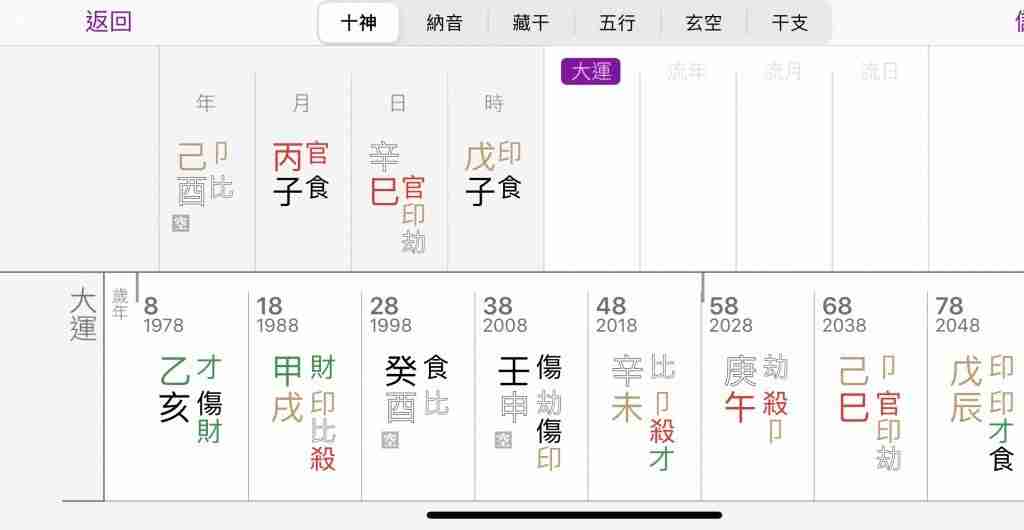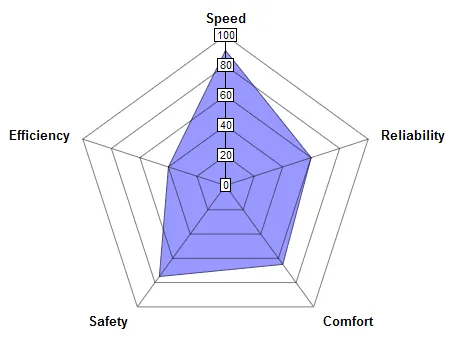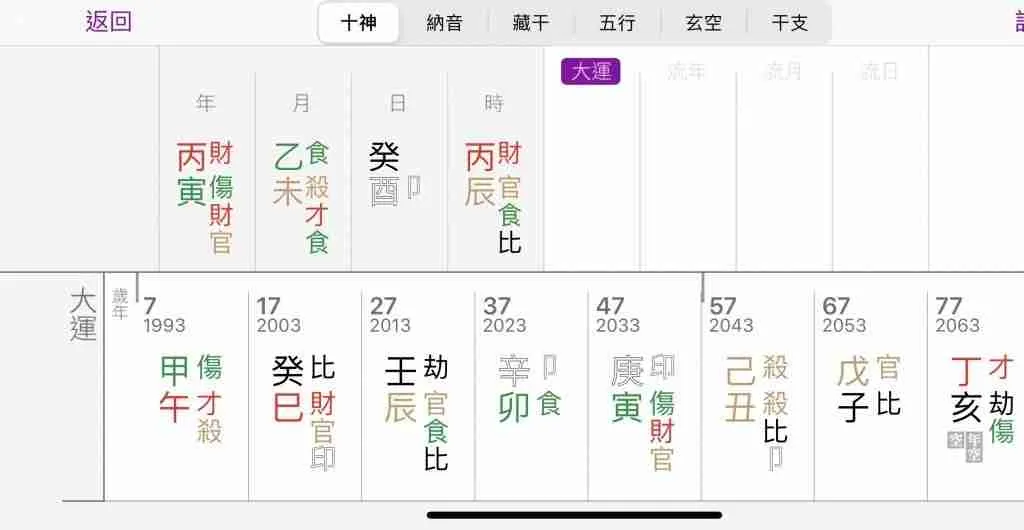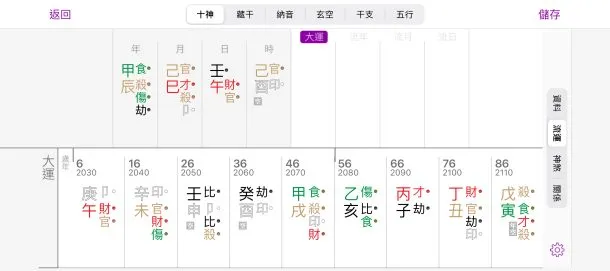Has everyone noticed many more advertisements on BaZi and Chinese metaphysics these days? I certainly have. One trend I’ve observed for a while now but haven’t written about is using BaZi and the Ten ‘Gods’ or stars to profile people so that they can leverage their strengths and attain success. Today, I want to address what’s wrong with this trend and what you should look for.
Let’s start with an introduction to the Ten Gods first.
What Are The Ten Gods?
Whenever you get a BaZi consultation, you will always hear about the Ten Gods. The Ten Gods are the 10 Heavenly Stems you often hear about, comprised of the Five Elements and their Yin & Yang polarities. For the uninitiated, they are:
- Wood, Fire, Earth, Metal Water or 甲乙木,丙丁火,戊己土,庚辛金 and 壬癸水
Whenever we talk about the Ten Gods, we talk about the 10 Heavenly Stems. The Ten Gods express how the 10 Heavenly Stems interact with each other, and it takes reference from your Daymaster. What do I mean?
Breaking Down The Ten Gods In BaZi
When you generate a BaZi chart, you’ll often see something like this.

You’ll always see the Ten Gods already laid out in the BaZi calculator. What’s next is to make sense of it. I know what’s going through everyone’s minds because, at one point, I was utterly clueless about what the characters meant.
There are altogether five different categories of Gods, which are:
- Officer (官杀)
- Resource (印)
- Peer (比劫)
- Output (食伤)
- Wealth (财)
The Five Categories describe the interaction between the Five Elements and your Daymaster, or Day Stem. I’ll elaborate:
- Officer category ‘gods’ comes from the element that controls you.
- Resource category ‘gods’ comes from the element that gives birth to you.
- Peer category ‘gods’ represent the same element.
- Output category ‘gods’ represent the element you produce.
- Wealth category ‘gods’ represent the element you control.
When I say “you,” it refers to your Daymaster.
Let’s take Yang Wood, for example:
- Metal would be Yang Wood’s Officer ‘god’; Water would be its Resource ‘god’; Wood would be its Peer ‘god’; Fire would be its Output ‘god,’ and Earth would be its Wealth ‘god.’
The formula applies to every other element. Once you know the formula, you can plot out the Ten Gods for yourself and identify which appears in your chart. You don’t usually have to worry about this because all BaZi calculators will do this for you.
Each Category has two gods determined by the Yin or Yang polarity and their interaction with the Daymaster. Taking Yang Wood as an example again, Yang Metal would be Yang Wood’s Indirect Officer (偏官) because both are Yang Elements. In contrast, Yin Metal would be Yang Wood’s Direct Officer (正官) because of a Yin and Yang interaction. As a rule of thumb, remember that a Yang + Yang or Yin + Yin interaction always lands you with an “Indirect” version of a ‘god’ which we usually call pian (偏) in Chinese, which means tilted or not following a straight path.
Yin Yang theory is at the heart of Chinese metaphysics and dates back to the 14th century BC when it was first found on oracle bones. It only started becoming the core of Chinese culture when it was mentioned in Lao Tzu’s Dao De Jing (道德经). In the Chinese classics, you often hear of similar polarity interactions (Yang + Yang or Yin + Yin) being called “无情” interactions, meaning they ‘lack heart, emotional or a bond’. This describes how similar polarities are not natural attractions to each other and often come with a bit of discomfort. Still, it does not necessarily mean it’s an intrinsically bad interaction. It just lacks balance and harmony. Yang and Yin interactions, on the other hand, are considered harmonious.
All these concepts play a part in BaZi analysis.
What Do The Ten Gods Represent?
There is a fascination with the Ten Gods amongst enthusiasts for obvious reasons – these Ten Gods make BaZi a lot more digestible for the layperson. Each of the Ten Gods represents something and holds clues as to whether one is the calibre for success and wealth. Many newcomers to BaZi rush to see whether they have certain ‘gods’ in their charts to assess their strengths because everyone likes to see positive things about them being mentioned. The Wealth element is, of course, the most popular of all the ‘gods’.
I’ll give a quick breakdown of what these Ten Gods can represent. I will focus on the positive sides only for now because it’s what sells:
Officer Category (官)
Traditionally, they assess someone’s ability to hold a high position and title. People in feudal China often look to these ‘gods’ to evaluate whether one is worthy of working in government and for the emperor. In modern times, its often used to assess someone’s leadership ability and whether they are worthy of respect. For a female chart, it can represent one’s husband, and for the male chart, one’s children.
Resource Category (印)
This ‘god’ is associated with protection, influence, and high position. The word yin (印) represents the imperial seal, which any officer will need because their power comes from the emperor. We often use the Resource ‘god’ to assess one’s academic abilities and whether they can influence others.
Peer Category (比劫)
The Peer ‘god’ represents what its name suggests: your friends and the people around you, and whether you’ll receive help from them.
Output Category (食伤)
The Output ‘god’ is known to be the artistic and expressive ‘god’. Instead of being named Direct or Indirect Output, you’ll hear Eating God (食神) and Hurting Officer (伤官) instead. Unfortunately, translating the names into English does make them sound weird. It represents children for the female chart.
Wealth Category (财)
Arguably the most popular ‘god’ in BaZi, it represents wealth, but it does not represent wealth that appears out of nowhere. What it truly reflects is the person’s capability and resourcefulness. Many people have abundant wealth elements in their charts but still struggle financially. For a male chart, it can also denote the wife.
Remember that each of the five categories and ‘gods’ will have a positive and negative side, so it does not mean that as long a particular ‘god’ appears, you will be the embodiment of what that ‘god’ represents. Analyzing a BaZi chart is always about assessing the chart’s overall state and balance.
Speaking of balance and each ‘god’ having both a positive and negative side, here comes the crux of the post.
The Trendy Way of Using BaZi Ten Gods to Profile Yourself
I’m not saying you cannot use the Ten Gods to profile someone. You can. But the way the Ten Gods ‘profiling system’ is being sold right now is seriously flawed and practically useless to a layman. It’s just another unnecessary packaging and product of the modern-day pseudo-Chinese metaphysics.
You might have come across some BaZi calculators available that show you a series of charts that illustrate how dominant a particular element or category of ‘god’ you have.

If it’s a bar chart, it usually lists down all the Ten Gods. If it’s a radar chart like the above, it usually refers to the Five Elements and the five categories of BaZi Gods, which I mentioned above.
Although I applaud the effort to put a form of structure to understand a chart, trying to inject something that is totally irrelevant sends every Chinese metaphysics enthusiast in the wrong direction. I don’t quite understand why you must replace the original system with a completely irrelevant one. The only purpose of such features is to tell you your strongest and weakest elements. It’s useful in that regard, but I must emphasize that it is the only use and what it can tell you is severely limited. We know that BaZi analysis consists of more than just this.
To the layman, these diagrams grab your interest, but they don’t tell you anything. These diagrams are entirely redundant to anyone with the self-respect of being a legitimate practitioner. A legitimate practitioner would not use these diagrams and images as part of the analysis. You will also not see professional calculators developed in Taiwan or China having these features because practitioners there aren’t the flashy types that put up a show to look more credible.
You have 75% Direct Wealth. So what? You have 50% Hurting Officer and 25% Peer. So what? It really doesn’t mean anything. The meaning behind the Ten Heavenly Stems and Twelve Earthly Branches is not something that percentages can express.
The reason why this is being done is always the same: Chinese metaphysics has to be dumbed down to such an extent for it to sell to the masses. Unfortunately, the masses are willing to accept this dumbed-down version that achieves nothing instead of picking up the right book to read. BaZi exists because the Chinese sages spent hundreds of years studying the stars and developing their prowess in astronomy. Sadly, people feel that a diagram that arbitrarily assigns a weightage to the elements can replace what our ancestors worked on.
Please believe me when I say this: If you genuinely know how to read a BaZi chart, you won’t need these diagrams and bars. They are unnecessary distractions.
The Misleading Analysis Pseudo Practitioners Give
You may have come across pseudo-practitioners (a new term I coined instead of using ‘practitioners’ with inverted commas) trying to explain what the pie charts and bars mean, which is interesting because how do you convey something that has absolutely no meaning? You conjure stories, of course.
You will hear things like having “a certain percentage” of a particular ‘god’ appearing is a right balance, and if it appears in a balanced percentage, you can use the positive side of that ‘god’. The next thing you know, they are trying to sell you something to hope you cope with the economic downturn when they are the ones who are struggling to cope.
In a BaZi chart, balance or achieving balance is not determined by throwing a percentage onto one of the ‘gods’.
Sweeping statements such as “You are suitable for business if you have Indirect Wealth or Hurting Officer” are also unfounded. You cannot encourage someone to kickstart a business just because the Indirect Wealth or Hurting Officer ‘god’ is the strongest ‘god’ in the chart. You’ll always get an explanation that people with Indirect Wealth are good with money and people relations. In contrast, a Hurting Officer structure does not like to be bounded by rules, so for them to be successful, they need to be free from them. I disagree with this for reasons my other blog posts should have explained by now.
Chart structures were mentioned in the Chinese classics but not how it is being presented today.
I have to mention, categorically and without bias or prejudice, that if any practitioner were to say something like this, that practitioner should not be in this field. Telling me I have 25% Direct wealth or 50% Indirect Officer is meaningless. There is no need or reason to assign a percentage to the chart’s elements; the key, ultimately, is to look at the flow of the elementals and the interaction between all four Pillars. Throwing a percentage in there is a red herring. You are better off sticking with MBTI or the Enneagram, and I would highly recommend the Enneagram if you’ve not heard of it.
Laypeople are incredibly vulnerable to such misleading packaging, so please be careful.
An Example of Why the Trendy Ten Gods Profiling System Is Flawed
Let’s take the below BaZi chart as an example.

The above is a female Yin Water chart born during summer in the month of wei (未). Let’s list down the obvious:
- Yes, a lot of Output and Wealth ‘gods’.
- There’s also some influence from the Direct Officer and Indirect Officer ‘god’.
My question to laymen and pseudo-practitioners is this, “What exactly do these mean?” Yes, the presence of Eating God and Wealth does make it look like an ‘Output Gives Birth To Wealth’ (食伤生财) chart structure which is a very well-known one that many successful business people have. But is this chart structure a qualified one? Does the diagram above reveal anything about that? It doesn’t.
Many beginners will immediately conclude that the above BaZi chart is good because of the ‘Output Gives Birth To Wealth’ structure, which is wrong. The above chart falls under a Category 4, extremely low-quality chart. You would be sorely mistaken if you think that low-quality, Category 4 charts can only be made up of negative ‘gods’ like 7-Killings, Rob Wealth, and whatnot. The above diagrams will never be able to reveal any form of meaningful insight.
You will be surprised that if you generate the Zi Wei Dou Shu equivalent of the chart above, this chart-holder has a Po Jun + Lian Zhen (破军,廉贞) chart and even has a Hua Ji transformer tagged to Lian Zhen (廉贞化忌). In this case, Zi Wei Dou Shu makes things a lot easier to see because it points out clearly that this is a horrendous chart belonging to someone with serious character flaws who will always take a beating in life. The chart-holder above has an abusive mother, her father got jailed before, and her career is a mess. Again, do the diagrams reveal that?
If we were to go with what’s being sold in the market now, we would assume that this person would take on the traits of Direct Wealth and Eating God, so the natural assumption is that this person likes stability, holds on to a stable job, and has an artistic side. The real-life manifestation is the complete opposite.
Mere pie charts, pentagrams and bars are not enough to decipher anything’s meaning, and I hope this example gives you a clear idea of why. If you genuinely wish to benefit from BaZi, what’s being sold in the market now is not the right way. A book on Chinese history will do you better.
Profiling Someone By Their Daymaster
Another trendy thing that pseudo-practitioners love doing is profiling people by their Daymasters. Our Daymaster can reveal some things about us, but my argument against this practice is the same as I’ve said above. There is no point broadly generalizing someone by their Daymaster if your chart analyzing abilities are not up to par.
We know that not all Yang Wood people are benevolent, not all Yin Metal people are elegant, not every Yin Water person is nurturing and not all Yang Metal people are strong-willed. It’s another reductive exercise that people waste a lot of time on. Categorizing people by the zodiac is bad enough, but at least we had 12 choices. Pseudo-practitioners made it worst by reducing that number to 10.
This raises the question: Should you be classified under your zodiac? Or your Daymaster? If you’re telling me it’s both, we might as well just do away with all these pointless pursuits and learn how to analyze a chart properly. We should not be approaching BaZi thinking that the first thing we need to do is to learn to profile someone accurately.
Let’s use a few examples: If someone’s Day Pillar were to be bing-shen (丙申), it tells us a few things. By theory, it can tell us that this person falls sick easily. However, it can also mean this person likely works in the healthcare field. This is the ‘sign’ that bing-shen represents, but you won’t know exactly how it manifests unless you look at the whole chart.
Analyzing a BaZi chart requires quite a bit of abstract thinking and a thorough understanding of the Chinese sages about Yin Yang and what ‘xiang’ (象) means. In other words, you cannot look at something one-dimensionally or even two-dimensionally. Every Stem and every Branch can refer to an infinite number of things.
Essential Concepts in BaZi That Are Left Out By Pseudo-Practitioners
So many other theoretical concepts in BaZi are not mentioned in your modern-day Ten Gods profiling balderdash. Elemental flow, flow direction, dryness, coldness, chart ‘pollutants’ (浊气), and the 12 stages. There are many more. You will not get these from these profiling calculators or services.
How about extraordinary chart structures like 飞天禄马?I hesitate to translate this into English. After all, it will sound silly because it translates into ‘abundant horse flying into the sky’. These calculators and services won’t be able to tell you something like that. Someone might be able to code that into a very good BaZi calculator, but a pseudo-practitioner will never know what this is if they’ve only ever attended some watered-down course out there and declared themselves a master a year later.
The concept of chart structures did appear in Chinese classics but not in how modern-day pseudo practitioners portray it. When chart structures were brought up in the past, it was always used to describe how chart balance is achieved.
Anyone, and I mean anyone, can come out and start their BaZi consulting business just by selling this Ten Gods profiling system because it is so ridiculous. You can do it too if you want. All pseudo-practitioners can’t even tell you where they are 10 Heavenly Stems – not 8 or 12 (Yes, I’m indirectly saying I can, and I can as far as telling you the astronomy behind it). I said it repeatedly, but if you are not interested enough to find out why something is the way it is, you will never be good at it.
BaZi Can Profile Someone if Applied Correctly
I’m not saying that BaZi cannot profile somebody, but it needs to be done correctly. You cannot profile somebody accurately if you don’t thoroughly understand BaZi’s theory and what each element represents and needs. I’m not referring to a superficial understanding. – I’m referring to knowing exactly what an element needs in a given situation and environment and what brings out the best in an element.
Suppose you want to go a step even further. In that case, you bring in the auxiliary stars and even the 8 Trigrams in next, but only after you’ve dissected the elemental interactions in the BaZi chart.
Let’s say you got yourself profiled and are happy with all the fancy diagrams and charts you see in your freshly generated BaZi report. What’s next?
Let’s not forget that BaZi has other components like your 10-Year “Luck Pillars” or Elemental Phases, your Annual “Luck Pillars”, Melodic Elements (纳音), and the countless interactions between them. These parts of the chart tell you how your life unfolds.
BaZi analysis is not merely generating a chart and reading the words that appear superficially. It’s imagining how the laws of nature constantly interact with each other and how it unfolds. One’s BaZi chart is dynamic and ever-changing. To present it as something that is static is a complete misrepresentation of BaZi.
Be Careful Reductive & Misleading BaZi Practices Out There
Unfortunately, Google’s ranking algorithm bumps up sites filled with misleading content simply because they talk a lot about it and not because they are subject matter experts. If a website says enough things about the Ten Gods, Google ranks them higher, even if everything they talk about is wrong. It’s why information on Chinese metaphysics will always remain superficial online. The system is not perfect, so it’s not Google’s fault, and it’s the reason why misleading information gets spread so quickly.
My message to everyone remains the same. Be careful of what you read, and give Chinese metaphysics and its history the respect it deserves. There are a lot of malpractices out there by pseudo-practitioners who have no idea what they are doing or are doing it deliberately because they want you to buy something.
It doesn’t matter which “profile” you fall under; the important thing is for you to be able to know whether your chart is a high-quality one or a low-quality one. If you’re elated because you see 100% in Indirect Officer and think you have leadership potential, willpower, and bravery. Well, good luck.
Whenever you see the divider above, it means I have come to the end of what I wish to communicate in the post. It’s a new structure I’ve put in place to keep my blog posts focused. Anything below the divider will be personal thoughts and some updates that may or may not be related to metaphysics. I will try my best to keep each post as informative as possible and less of a personal rambling, but do pardon the one-liner outbursts occasionally.
The Covid-19 pandemic has hit everyone, practitioners included. I’ll be upfront that this month has been the slowest month ever in a few years, which is fine! As you can tell by now, I’m taking the time to do more research, reading, and writing. What’s interesting is the number of new advertisements other practitioners are running. I mentioned before that if you have overheads or treat this like a business you keep trying to scale, you’ll be put under pressure one day and forced into a position to do things that are good for revenue but not for the people. It’s funny to see how many pseudo-practitioners are becoming desperate during this time.
Plenty of practitioners and companies will try to score a BaZi reading from you using the charts and diagrams shown above. If that’s your thing, go ahead. Whatever rocks your boat. I know I keep harping about all the misleading information by pseudo-practitioners who treat this as a business, but I see it as doing my part for this industry and what our ancestors passed down to us. I apologize for the repetitiveness, and I sometimes get sick of myself. This blog’s theme has always centred on helping people become more aware and educated. Lastly, I hope everyone understands why I feel so strongly about these things because whatever is happening now is just too ridiculous and unacceptable. I cannot sit back and do nothing.
There’s no need to break down a Chinese metaphysics technique and say there are ten unique ways of using it. If you know how to use it, it simply means you know how to use it. There’s no need for ten different ways. I’m sure everyone drives their car with their hands on the steering wheel. If I came up with a book titled “10 Unique Ways To Drive Your Car – Starting with Your Teeth to Your Toes”, would you take me seriously?
I do not usually ask people to share my posts on social media. Still, given the change in Google algorithms and how much misleading content is being bumped up just because they keep writing about it, I hope everyone can share this in whatever way they can. I will also have to change my content strategy slightly, but I’ll keep it fresh and real for everyone. It’s not about business or wanting more revenue during a difficult time. The Google algorithm update serves as an excellent reminder to keep my content relevant, and this lull period I’m having is very much welcomed, too.
I hope everyone is well. Take care, and hang in there!









